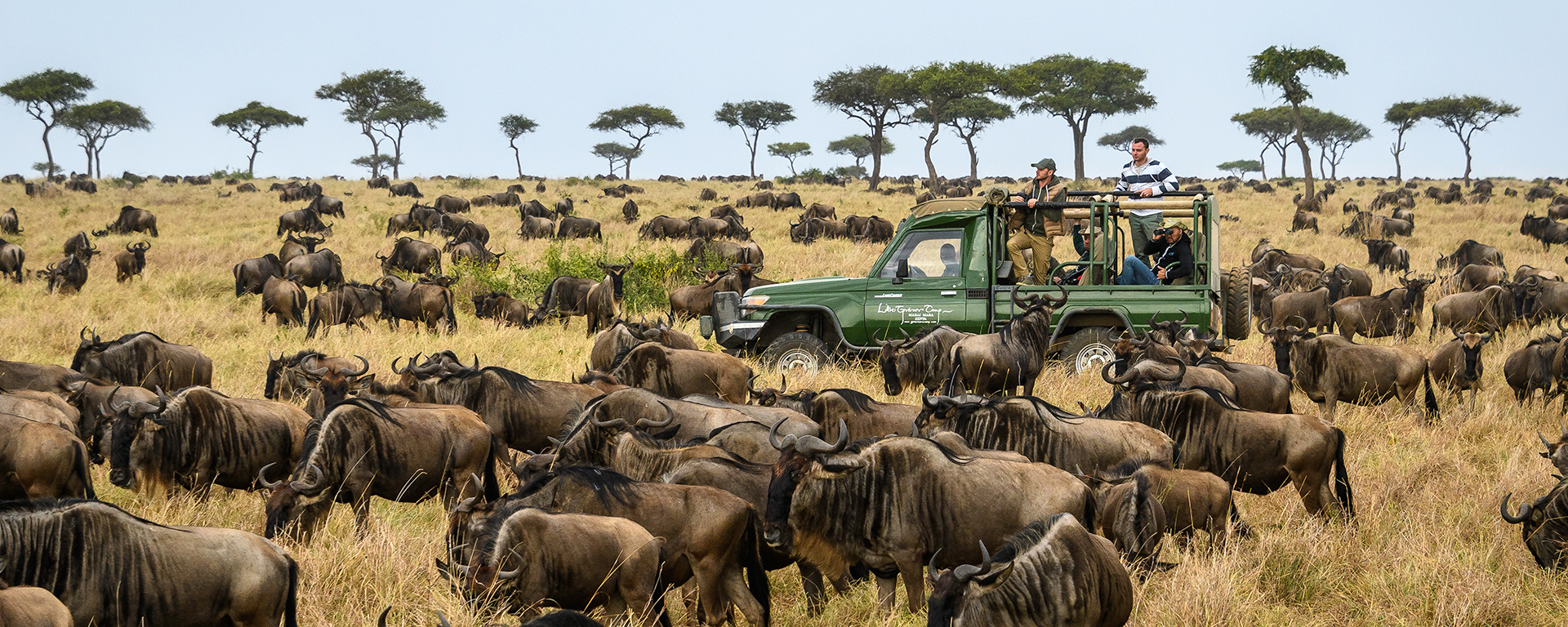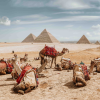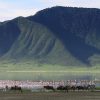The Serengeti Wildebeest Migration in Tanzania
We all know about humans migrating from one place to another. But are you aware of the great migration that takes place every year in East Africa? Every year, as the seasons change in eastern Africa, millions of wild animals, including the famous Big Five, migrate from Tanzania to Kenya and vice versa. To date, no scientist has concluded the reason for this. However, watching this great migration of wild animals is an absolute delight. Come along and stay in this blog till the end as Yup Africano takes you through wildebeest migration in Tanzania.
Related Read: Essential Pre-Travel Tips for Kenya Explorers with Yup Africano.
What is The Serengeti Wildebeest Migration in Tanzania?
This wild migration is a continuous, cyclical activity that mostly takes place in Tanzania’s Serengeti National Park and, to a lesser extent, in Kenya’s Masai Mara National Reserve. A continual hunt for freshwater and green pastures is carried out by 1.5 million wildebeest, hundreds of thousands of zebra, gazelles, eland, and impala as they travel hundreds of kilometers in a clockwise manner from Tanzania towards Kenya. Every year, this movement has a very consistent pattern. This consistent pattern makes it very easy for tourists and visitors to enjoy the wildlife in a very different way. That is why at Yup Africano, we suggest you book your Tanzania tour packages from Dubai if you are passionate about wildlife and raw nature. Photographers and animal lovers should not miss the migration, which is regarded as one of the most well-known natural events in the world.
The Best Time to Witness Wildebeest Migration in Tanzania?
While there are always opportunities to witness the massive herds, there isn’t a single optimal time of year to witness the migration; rather, there are better times of year to observe certain parts of the process. However, it can be challenging to pinpoint with any degree of accuracy when and where the herds will be, as well as what they could be doing because the precise timing of the migration depends on the amount of rain and other natural factors. The emergence of global climate change has increased the frequency of this discrepancy. A sudden, extremely high, or low amount of rain could drastically change how the herds move. So whenever you book your Tanzania safari package from Dubai, there are high chance you will be able to watch some part of the great migration at Serengeti.
Here are 9 safety tips for solo female travelers.
How Does the Migration Proceed?
The patterns of rainfall, which can differ from year to year, are the primary cause of the annual migration from the Serengeti into the Masai Mara. As a result, the herds’ annual migration will differ in terms of both date and location. There is a lot of zigzag along the road, especially when large groups split off from the main herd. The migrating animals usually stay on the western edge of the Serengeti Plain when they go north to south and on the east side when they move south to north. The entire migration has no start or end, as it is cyclical. The southern Serengeti is home to the majority of wildebeest from December to March when they give birth to calves over three weeks in February. The herds head north onto more appealing fresh grasses and copious amounts of water made possible by the rainfall as soon as the newborns are robust enough to walk great distances and the extended rainy season commences. Thus, tourists can book customized group trips in Dubai for Serengeti according to their preferences and convenience. If you are booking Tanzania holiday packages from Dubai, then take a look at the general pattern of migration.
The General Pattern of Migration is as follows;
- November: Migration southward (into the eastern Serengeti’s Lobo and Loliondo regions).
- December through March: Calving (southern Serengeti’s Ndutu region).
- The green season (southwest and central Serengeti) runs from April to May.
- Movement northward (the Serengeti’s Western Corridor) from June to July.
- Northern Serengeti River Crossings, August to September.
- October: Grazing and restricted migration (Kenya’s Masai Mara and the northern Serengeti).
Also, read our blog titled “Discover Hidden Gems in Dubai with Yup Africano for an Unforgettable Vacation.”
Details of the General Migration Pattern
The migration moves southward, along the eastern edge of the Serengeti, as the brief November rains begin in northern Tanzania. By this time, the wildebeest are traveling to the northern Ngorongoro Conservation Area and the southern grass plains surrounding Lake Ndutu, where they anticipate finding a lot of fresh, green, and extremely nutritious grass to eat and to feed their young after they are born. Booking holiday packages from Dubai to Tanzania around this period can be a great idea. Especially given that there will be a lot of wildlife spotting opportunities.
This region is inhabited by zebras and wildebeests from December to March. The season for wildebeest calving starts at this time. For almost three weeks in the middle of February, about 8,000 wildebeests give birth every day. During this season, one might witness the striking and frequently unsettling sight of predators positioned to prey on feeble and bewildered calves. You may book your Tanzania holiday packages from Dubai to witness these marvelous natural occurrences.
You may even book your Tanzania holiday from Dubai in April. When rain begins to fall on the Serengeti, the herds will move north in search of new pasture and water. The single, massive herd will divide into multiple groups when grazing opportunities increase; some of these groups will head directly north, while others will move farther west. In May, they trek through the central Serengeti, passing through the Moru Kopjes area and west of the Seronera area. In June or July, the westward-moving groups arrive along the south bank of the Grumeti River. Grumeti crossings slow down the animals congregated in the Western Corridor. The river is made up of difficult-to-cross pools and channels, and to make matters more difficult, crocodiles lurk in wait for their yearly mating season.
August sees the herds continuing their northward migration, either further eastward within Serengeti National Park proper or throughout the Grumeti Reserve and Ikorongo area. The Mara River will present them with the biggest challenge of their expedition at this point. The weakest members of the herd are taken by strong currents, the youngest members are attacked by predators, and animals trying to cross are captured by crocodiles. Visitors get the opportunity to witness the harsh truth of the Serengeti ecosystem’s food chain, which makes for a dramatic and unsettling spectacle of terror and bewilderment. During this period, visitors can book their Dubai-specific tours with Yup Africano and embark on an unforgettable journey.
As the dry season deepens into October, the herds stay in September in the Masai Mara and far northern Serengeti, where dependable grass is available. For the duration of the dry season, they will remain in the Masai Mara. When the November rains arrive, they head south once more in preparation for another calving season.
The cycle continues in similar patterns through the years.
Contact Yup Africano to book your Tanzania safari today!







